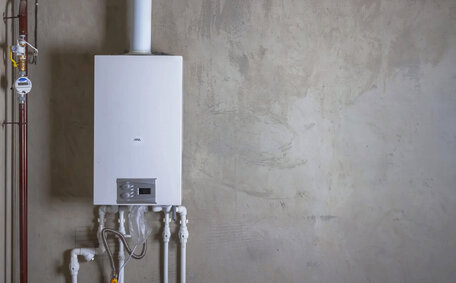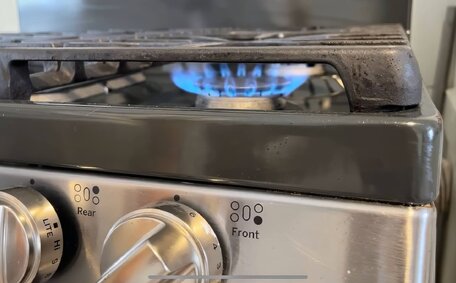When to Use a Plunger on a Blocked Drain
A plunger can be an effective tool for clearing simple drain blockages caused by hair, soap scum, or loose debris that has accumulated over time. Signs that a plunger may resolve your issue include slow draining water, suggesting that it’s suited for simple blockages like accumulated hair, soap scum, or debris.
However, when trying to unblock a drain, plungers have limitations in terms of reach and power.
Using a plunger without pinpointing the blockage’s location might force it deeper, complicating matters especially in a blocked toilet drain.
If plunging multiple times doesn’t unblock drain, a more powerful tool like a power auger may be needed, or the help from a professional plumber.
In summary, plungers can unblock simple, localised drain clogs. Handling significant blockages or those beyond view might require alternative techniques, as tougher clogs demand more forceful strategies. Respond promptly when handling fully blocked drains because you’ll need effective measures to avert untidy overflows or possible water damage.
Selecting the Right Plunger for Different Drain Types
Using the correct type of plunger for your drain is key to clearing clogs effectively. Consider these main plunger types for optimal results:
- Cup plungers: An optimal choice to unblock sink drains effectively. The cup’s silhouette thoroughly envelops and plunges the opening, unblocking a stubborn blocked sink.
- Flange plungers: Exclusively designed for your toilet and pipe plunging, with a tapering cone shape for deeper penetration.
- Accordion plungers: Flexible for targeting tight spaces like your shower drain or a bathroom sink.
Ensure the plunger’s cup or flange size closely matches your drain to create the necessary tight seal for effective unblocking. This method sends targeted force down drain to dislodge clogs.
For sink drains, cover any overflow holes to help when you need unclog your drain more effectively by preventing water escape. Plunge down the drain 10-15 times to tackle manageable obstructions, remembering variations in pressure can effectively maximise efficiency.
A closet auger with a handle that reaches a few feet can delve deeper into your blocked drain, similar to toilet plungers with their cone shape. Apply pressure directly down on their extended flanged edges to generate the necessary leverage during plunging.
Accordion plungers are best for tight shower drains. Their flexible flange conforms to shapes while collapsing to push air/pressure downwards.
Choosing and using the right-sized plunger for each drain is essential for safe and successful DIY clog clearing.
Using a Plunger Safely Without Causing Damage
When using a plunger, take care to avoid damage by following these safety tips:
- Wear rubber gloves for hygiene and grip.
- Place an old towel over drain to catch any excess water that may spill.
- If removable, take out the water sink drain traps first.
- Create a tight seal around the entire drain rim with the plunger.
- Apply light pressure with gentle repeated plunges initially.
- Increase force gradually if needed but avoid aggressive plunging.
- Scrutinise your pipes beneath sinks for any traces of leakage or harm after allowing the plunger to work its magic.
- Contact our professional plumbers if issues your drain is experiencing persist on 1300 349 338.
Taking a gentle approach first minimises mess and reduces chances of seals weakening or pipes disconnecting. Nevertheless, apply consistent force to help any stand-alone drain cleaning solutions reach and dissolve the blockage. Remember to never use a chemical drain cleaner with a plunger simultaneously as this can cause dangerous chemical splash back.
Safety comes first when tackling DIY drain clearing. Equip yourself with the correct knowledge and tools, and should issues prove beyond your capability, don’t hesitate to call in a professional at any time.
The Plunger Method: Step-by-Step Guide
Follow this simple, safe process when using a plunger to unblock a drain:
- Commence by heating a kettle of water to get your hot water ready for use. Pour around half the water into the plughole of the blocked drain and let it sit, as hot water can also help to soften the clog.
- Choose a plunger that fits snugly over your drain to tackle the drain clog with the best results. Place the plunger over the drain opening and press firmly to create airtight seal all around.
- Introduce some dish soap into the drain through the plunger cup to aid in lubricating and push down the obstruction to efficiently unclog drain.
- Persistently press down on the plunger with care until clog yields, roughly 10-15 times, make sure the seal stays intact.
- Eject the plunger and send down some hot water down sink to wash off any lingering detritus.
- Check if water is draining freely. If the sink still isn’t fully cleared, repeat steps 2-5 increasing force slightly.
- Once water drains freely, flush the drain well with hot water to clear out any remaining gunk.
Tip: For persistent clogs, try our baking soda method: Pour one cup of baking soda followed by one cup of white vinegar down the plughole. Let react for a few minutes then rinse with a kettle of boiling water.
This method should keep your sinks and tubs free from most straightforward clogs. Contact our Glenhaven Plumbing team on 1300 349 338 for professional drain clearing services if issues continue beyond DIY abilities.
Troubleshooting Tips If a Plunger Doesn’t Unclog
Should the plunger fail to unclog your drain, consider these other techniques before calling a professional. Consider these additional troubleshooting methods before resorting to a plumber:
- Try a natural solution like baking soda and vinegar. Pour 1 cup of baking soda followed by 1 cup of hot white vinegar down the drain. The effervescent chemical reaction is adept at helping to break up the blockage your drain encounters.
- Attempt manually clearing the drain with a drain snake or a wire coat hanger. Straighten the hanger and feed wire slowly down the drain to poke and dislodge clogs.
- You could also use a plumber’s snake with sufficient cable length to reach deeper into the drain. Gently thread the end of the cable into pipe, wielding the hand crank in a clockwise rotation for optimal effect. The spinning action can get to grips with the clog, thereby finding a way clear for your pipes.
- Inspect other connected drains. The problem may originate elsewhere allowing debris to travel to your drain.
- Help prevent future clogs by installing drain screens and avoiding grease/food buildup.
- Contact our Glenhaven Plumbing team for professional drain assessments and clearing by calling 1300 349 338 or emailing [email protected].
If home remedies don’t resolve stubborn blockages, consider our guide as hot water can sometimes provide a simple solution. Our team tackles embedded blockages quickly using high-pressure jetting, pipe inspections and advanced equipment.
Alternative Approaches for Stubborn Clogs
For severe blockages resistant to plunging, try these alternative methods before seeking professional help:
- Boiling water - Pour a full kettle of boiling water down the drain, as the intense heat helps dissolve grease and deposits.
- Wire hanger - Straighten out a wire hanger and carefully insert it into the drain pipe, poking gently to dislodge gunk.
- Chemical cleaner - Employ an enzyme-based foaming drain cleaner so that drain cleaners can effectively clear your pipes, letting it cling to the walls overnight to dissolve organic matter.
- Salt and baking soda - Sprinkle one cup of salt followed by one cup of baking soda down the drain. Add a kettle of boiling water and let sit for 15 minutes before flushing with water.
When dealing with tough toilet drain problems, be sure to take all safety measures to prevent hazards. Wear gloves and goggles, check drain connections for leaks afterwards, and never mix chemical cleaners together as toxic gases can form.
If alternative approaches prove ineffective and a clogged drain persists, call our Glenhaven Plumbing team anytime on 1300 349 338 for professional assistance.
When to Call a Professional Plumber
Some indications suggest you should call a professional plumber instead of attempting to resolve drain blockages on your own:
- Water is overflowing from drains or pipes are leaking.
- Multiple drains in your home are all blocked.
- You’ve attempted using a plunger, drain snakes, and drain cleaners with no success.
- Clogs are recurring and regular plunging provides only temporary relief.
- Noticeable bad odours are coming from drains despite efforts.
- You suspect the main sewer drain line is blocked.
Our licensed Glenhaven Plumbing technicians tackle issues using advanced technology, high-pressure water jetting, and their expertise to resolve deep clogs and thoroughly inspect drains. We can identify issues causing recurring blockages and provide long term solutions.
Key advantages of engaging our team can help address your plumbing needs include:
- Problem diagnosis using drain cameras.
- Powerful jetting to scour stubborn debris.
- Electronic pipe and drain locating.
- Emergency plumbing available 24/7.
- Upfront quotes and competitive rates.
- Follow up maintenance drain cleaning.
Bypass the hassle of prolonged DIY efforts; our reliable emergency plumbing team can swiftly resolve the issue. Call Glenhaven Plumbing on 1300 349 338 anytime to unclog blocked drains.
Preventing Future Drain Blockages
To avoid drain blockages in the future, follow these key prevention tips:
- Install drain screens in kitchen and bathroom sinks, as well as other fixtures, to catch hair and prevent debris buildup.
- Avoid pouring oil, grease or fatty food scraps into your kitchen sink. Let cool and discard in the rubbish bin.
- Use a drain catcher to trap food particles and empty regularly into the bin.
- Minimise soap residue in bathroom drains by cleaning excess from bottles before disposal.
- Once a month, pour boiling water down the drain to remove soap residue, hair, and grime.
- Use a cup plunger regularly to keep bathroom and kitchen sink pipes clear.
- Regularly check pipes under sinks for leaks, as these can indicate underlying problems.
- Schedule annual professional inspections and cleaning of drains as preventative maintenance.
Glenhaven Plumbing offers the following preventative services in the Sydney region:
- Yearly maintenance drain inspections using in-pipe CCTV cameras.
- Hydro jetting services to flush embedded grime.
- Guaranteed expertise locating hidden drain line blockages.
- Supply and installation of drain screens for new plumbing works.
Proactive and regular maintenance helps prevent future plumbing problems. For professional plumbing services and blocked drain prevention, contact Glenhaven Plumbing at 1300 349 338.





